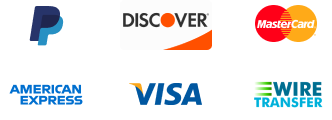The global NovoSeven RT market size is estimated to grow at a CAGR of 6.14% during the forecast period (2025–2033). In recent years, ongoing innovations in recombinant DNA technology and coagulation factor replacement therapies are improving the efficacy and safety of NovoSeven RT, making it a preferred choice for managing bleeding episodes in hemophilia patients with inhibitor complications. This is estimated to drive the global NovoSeven RT market growth.
NovoSeven RT (Coagulation Factor VIIa [Recombinant]) is a prescription medication used to control bleeding in patients with hemophilia A or B with inhibitors, congenital Factor VII deficiency, or Glanzmann’s thrombasthenia unresponsive to platelet transfusions. It works by promoting blood clotting through the activation of the coagulation cascade.
This medication is administered via intravenous injection and is commonly used in emergency bleeding situations or during surgeries to prevent excessive blood loss. Manufactured by Novo Nordisk, it offers a recombinant alternative to plasma-derived clotting factors, reducing the risk of infections. Proper dosage and administration require medical supervision to ensure safety and efficacy.
The surging prevalence of hemophilia and other bleeding disorders is a key driver for the global NovoSeven RT market. Hemophilia A and B, along with conditions like acquired hemophilia and Glanzmann’s thrombasthenia, require effective coagulation therapies to manage spontaneous or trauma-induced bleeding episodes. The rising incidence of these disorders, coupled with improved diagnostic capabilities, is leading to a higher demand for recombinant coagulation factor treatments like NovoSeven RT.
Thus, as awareness grows and more patients receive early diagnosis, the demand for advanced and reliable treatment options is expected to increase significantly.
The use of Novoseven RT is associated with an increased risk of thrombotic events, posing a significant restraint to market growth. Recombinant factor VIIa therapy can lead to serious complications such as deep vein thrombosis, pulmonary embolism, and arterial thrombosis, particularly in off-label applications like trauma and surgery. These safety concerns limit its widespread adoption, especially among elderly patients and individuals with preexisting cardiovascular conditions. Therefore, regulatory agencies emphasize caution, requiring extensive risk-benefit assessments before approval and use. Moreover, healthcare providers may hesitate to prescribe the drug due to potential legal and medical liabilities, further restricting market expansion.
In the past few years, there has been a surging demand for Novoseven RT in emerging markets due to increasing awareness, improving healthcare infrastructure, and rising government initiatives, thereby creating opportunities for global market growth. Countries like India, China, and Brazil are witnessing a surge in hemophilia diagnosis rates, boosting the need for advanced coagulation therapies.
Thus, the growing availability of Novoseven RT in these regions, coupled with increasing healthcare expenditure, is expected to drive significant market expansion, addressing unmet needs in bleeding disorder management.
| ATTRIBUTES | DETAILS |
|---|---|
| Study Period | 2021-2033 |
| Historical Year | 2021-2024 |
| Forecast Period | 2025-2033 |
| By Indication |
|
| By Distribution Channel |
|
| Regional Insights |
|
The Congenital Factor VII Deficiency segment represents a critical application of Novoseven RT, catering to patients with a rare genetic disorder affecting blood clotting. Due to its low global prevalence, diagnosis and treatment awareness are gradually increasing, boosting demand for recombinant factor VIIa therapy. Novoseven RT is the preferred treatment due to its efficacy in preventing and controlling bleeding episodes. Market growth in this segment is driven by improved genetic screening, rising patient identification rates, and advancements in coagulation disorder management. However, challenges such as high treatment costs and limited access to specialized care in developing regions may hinder expansion.
Hospital pharmacies dominate the distribution channel for the global market due to the critical need for immediate access to clotting factor therapies in emergency settings. Hospitals handle the majority of severe bleeding episodes, including those related to hemophilia, congenital factor VII deficiency, trauma, and surgeries. The availability of Novoseven RT in hospital pharmacies ensures timely administration, reducing mortality and complications in critical cases. The growth of this segment can be attributed to the increasing hospital admissions for bleeding disorders, rising surgical procedures, and the expansion of specialized hemophilia treatment centers. However, high procurement costs and strict storage requirements present operational challenges.
North America dominates the global Novoseven RT market, driven by a high prevalence of hemophilia and rare bleeding disorders, advanced healthcare infrastructure, and strong regulatory approvals. According to the Centers for Disease Control and Prevention (CDC), nearly 33,000 males in the U.S. have hemophilia, with 60% of hemophilia A cases being severe. The Hemophilia Federation of America reports that recombinant therapies, including Novoseven RT, are the preferred treatment for bleeding episodes, ensuring sustained demand.
Additionally, the U.S. Food and Drug Administration (FDA) plays a crucial role in market growth through timely approvals and expanded indications. In 2023, the FDA approved Novoseven RT for Glanzmann’s thrombasthenia patients unresponsive to platelet transfusions, reinforcing the product’s importance in rare bleeding disorder management. Furthermore, major pharmaceutical companies like Novo Nordisk, the manufacturer of Novoseven RT, continue to invest in clinical trials and innovative formulations to enhance efficacy and safety.
Reimbursement support and insurance coverage further bolster market expansion. Programs such as Medicare, Medicaid, and private insurance plans cover recombinant factor VIIa therapies, reducing financial barriers for patients. Canada also exhibits strong market potential, with organizations like Hemophilia Canada advocating for better treatment access. With ongoing research, increasing diagnosis rates, and government support, North America is expected to maintain its leadership in the global market.




